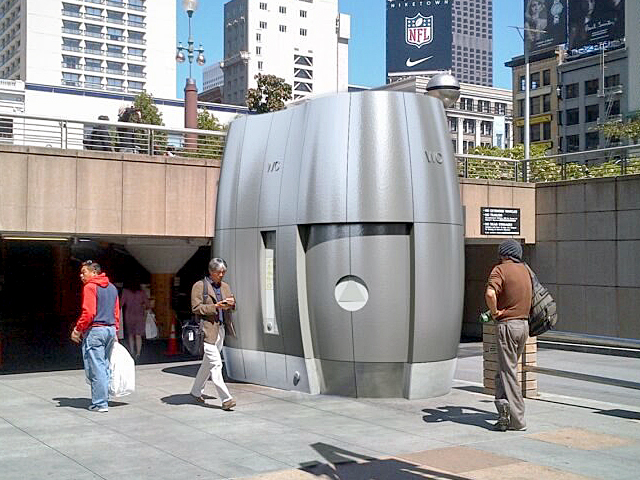AMENITREES | A GREEN PUBLIC AMENITY ALTERNATIVE
11 Sep 2019
Because we love a good toilet story at ODS, here’s one from the streets of San Francisco. A green-roofed, metal-clad bathroom that doubles as a kiosk and recycles rainwater – what more could you ask for?

The San Francisco Department of Public Works (DPW) has crowned SmithGroup the winner of its design competition for public toilet proposals. The winning entry, called AmeniTREES, would offer not only washroom functionality but also space for a commercial kiosk and environmentally-friendly benefits. Topped with a green roof, the sculptural, metal-clad pavilions would be integrated with digital technology for advertising or educational purposes along with a rainwater harvesting system. 
Developed as a kit of parts, the AmeniTREES are designed for easy transportation, assembly, customisation and maintenance. Each curved, steel-framed pavilion will be clad in hot-formed metal panels and glass and then topped with a native green roof with a tree system addon. To tap into cost-saving opportunities, the pavilions feature an integrated digital screen protected with a glass and metal skin that can be used for static or digital advertising.
SmithGroup created four options for the AmeniTREES: a single unit pavilion, a double unit pavilion, a double pavilion with a bench addon or a double pavilion with a rooftop tree addon. 
“New structures are iconic in their design and adaptability — transforming to varied site needs,” the architects explained. “Developing these design alternatives, along with the incorporation of varied native grasses and trees, allow for a cohesive collection of pavilions that are as varied as San Francisco’s neighbourhoods.”
The rainwater harvesting system is engineered for minimal maintenance and enhanced durability. The collected water can be used to wash the units, water the vegetation or flush toilets to minimise reliance on the city’s potable water. Moreover, the green roof on each unit can enhance the city’s biodiversity and promote a cooling microclimate to combat the urban heat island effect. 
Via Inhabitat | Images from SmithGroup







